Air travel is often bittersweet. The promise of embarking on an adventure or returning home is impeded only by the necessity of spending several hours inside a pressured tin can hurdling along the stratosphere at 30,000 feet. The airlines themselves don’t always help make the process pleasant either. But with several breakthroughs in airline design and travel protocol, 2014 is ushering in a wave of design innovations to make flying enjoyable.
10. Picture-Perfect Itineraries
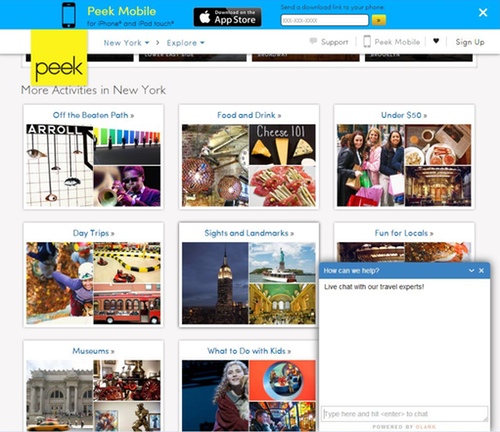
Photo via Peek.com
Redesigning the travel experience from the planning stages, companies like Peek.com and Pin.Pack.Go are offering a new way for visually-minded travelers to create a Pinterest-like board, which a team of travel agent wizards turn into a real-life itinerary. Peek.com is available to anyone, while Pin.Pack.Go is offered through the Four Seasons. The idea behind both websites is that by having all the information in one place, and displaying it in an aesthetically pleasing way, travelers can discover more options and design a picture-perfect trip right from the beginning. Both ventures garnered instant success and a smattering of followers, an indication of similar sites and apps to come.
9. Cheaper Transatlantic Sojourns
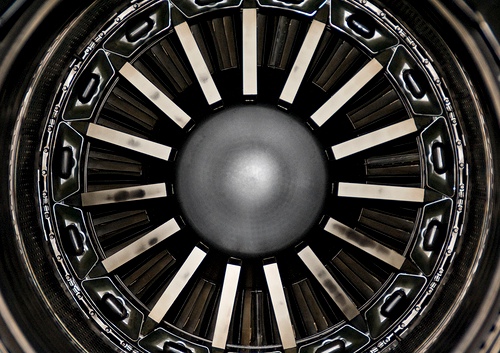
Photo via Flickr, Rob Fay
This summer, thanks to an engine redesign, Norwegian Airlines will become the first European budget airline to fly transatlantic. With the more fuel efficient GE/Snecma engines on their Boeing 737 “air shuttle,” the Scandinavian company will be able to offer $240 one-way tickets from New York to Gatwick and $320 one-way fares from Los Angeles to Gatwick. (They will also fly to Fort Lauderdale, but Norwegian has yet to name a price for that trip.) The engines are 20 percent more efficient than its competitors and tickets are about 50 percent cheaper than the average price for a Gatwick to New York flight. Long weekend trip to London, anyone?
8. A Dreamier Dreamliner

Photo via Flickr, Doug
It isn’t often that a new type of commercial aircraft takes to the skies, but this spring Air Canada’s 787 Dreamliner will take-off and debut its brand-new interior. Business class will have lie-flat executive pods and an 18-inch screen on the in-flight entertainment system. Economy and premium economy will have individual 9-inch screens at every seat and promise the use of an innovative seating design and arrangement to allow for maximum legroom. Aside from interior design, the plane itself will feature the largest windows of any commercial aircraft in the world. The Dreamliner will start with domestic flights and by July Air Canada hopes to have a Toronto-Tokyo route in operation.
7. Sky-High Wifi
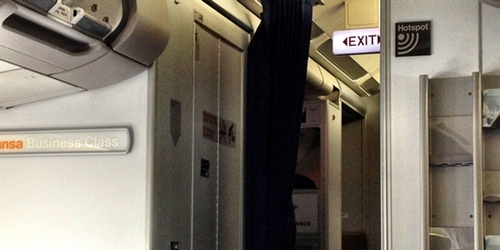
Photo via Flickr, Karl Baron
Wifi on international flights is no revolution, but as 2014 progresses more and more airlines will offer in-flight wifi on domestic and short-haul flights. Even on international flights, getting online still comes with a fee – sometimes to the point where it seems ridiculous ($34 to check Facebook and stream Criminal Minds? I don’t think so). But if you’re a frequent flier, the monthly subscription is worth it. Related to wifi, relaxed FCC and aviation rules means some airlines, such as US Airways, are now allowing the use of cell phones during flight. The issue is still under debate in the US and will likely resolve this year. Whether listening to a cabin full of passengers catching up with loved ones on the ground or making dinner reservation is something to look forward to in the new year, has yet to be decided.
6. Delectable In-Flight Delicacies

Photo via Flickr, Cruisair
It’s been scientifically proven that as altitude increases, human taste perception decreases. In short, the higher you go, the more bland food tastes. Despite this uphill battle, more airlines are making an effort to make their in-flight meal options more palatable. Air France now offers an organic meal option and Michelin star chef-designed meals are becoming en vogue on longer flights: Qatar Airways uses Nobu Matsuhisa, Vineet Bhatia and Tom Aiken, while British Airways uses Heston Blumenthal. A few airlines (okay, just Etihad and Austrian Airlines at the moment), even have personal in-flight chefs to cater to your every culinary whim at 38,000 feet, for an immodest extra fee.
5. A Cushier Coach
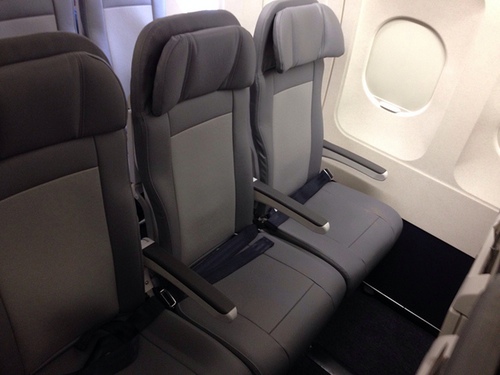
Photo via Flickr, Edward Russell
When airlines give their carriers an interior overhaul, most of the attention goes to the business and first class cabins—economy will be lucky to get some new upholstery and clean carpets. But in 2014 airlines such as Southwest, Spirit and Alaska Airlines have decided to try out a new generation of Slimline economy seats. The Slimline seats have received mixed reviews, as they are locked at an incline and cannot be reclined further, making it a design revolution for some and a nuisance for others. The airlines could not be happier with the new seats—they are lighter and the new configuration means they can pack an extra six seats or more into each plane—so love them or hate them, it looks like they’re here to stay.
4. IFE on SHF
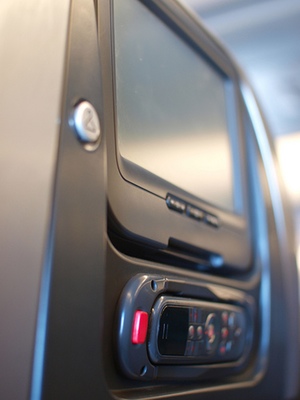
Photo via Flickr, bourdieu_boy
Even on SHF (short-haul flights), airlines such as Qantas and Virgin are beginning to offer IFE (in-flight entertainment) systems. Virgin now has access to in-flight entertainment by allowing passengers to use their own devices to access their system, while Qantas rolled out a collection of iPads, rather than revamping all the seats with screens and controls. Southwest is set to follow and introduce in-flight iPads this year, while Finnair has promised Samsung Tab 3 tablets, preloaded with movies and TV shows. With the popularity of in-flight entertainment systems on shorter flights we can expect to see more airlines jump on the bandwagon as 2014 progresses.
3. A Silent Flight

Photo via Jays of Sweden
The days of the antiquated two-prong headphone jack are almost over—most airlines allow passengers to bring and use their own headphones, without needing an adapter. In celebration of this aviation triumph, several flight-friendly headphones have made it onto the market. Since only ear bud-style headphones are permitted during take-off and landing on many airlines, Sennheiser combined the much needed noise isolating feature, with a lightweight design and released the IE 800s ear bud. The IE 800s have superb sound quality, are comfortable enough to sleep in and have a tangle resistant cable. The downside: they retail for $1200. If that is a bit out of your price range, Jays also just debuted an ear bud style headset with a-Jays Five, priced at $100. The a-Jays Fives also feature noise isolation and fit snug without painful pinches.
2. Trading Cards
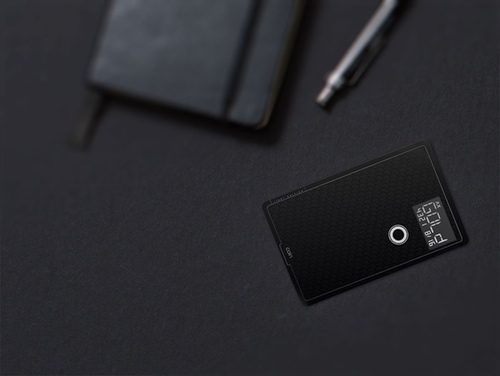
Photo via Coin
At any given moment, a traveler’s wallet usually holds a plethora of banks cards: Visa, American Express, Diners Club, corporate credit card, Starbucks card, debit card and so on, just to keep all the purchasing bases covered for those “Oh, you don’t take MasterCard!?” moments. Entrepreneur Kanishk Parashar sought to solve this problem with Coin. Coin is normally sized bank card with a difference—it allows travelers to consolidate multiple bank, gift or loyalty cards on a single card. The Coin card (or just Coin) can store up to eight regular credit, debit and/or gift cards on its hidden circuitry. Before making a purchase, the user selects which card they want to use by toggling through the stored selections with a discrete button and then swipes the card as normal. The all-in-one card can be used by itself or linked with an iPhone or Android if desired. Coin will retail for $100 later this year, but eager early adopters can pre-order Coin from the website for $50 (US shipping only).
1. Getting Connected

Photo via Viator.com
With the proliferation of gate-to-gate wifi, developers are designing more apps to help make travel as carefree and entertaining as possible. Standouts for 2014 include the latest version of SeatGuru, which allows passengers to pick their seats with a redesigned hi-res seat map, as well as compare airfares from a spectrum of carriers to find the cheapest fare. Once you arrive at your destination, the Viator app allows jetsetters and globetrotters alike to travel like pros and make tours reservations and purchase tickets for attractions with local companies. Viator supplies local deals and discounts along the way, and allows the user to make purchases in his or her home currency to save on exchange rates. Finally, Dots is a fun and free app to kill time or de-stress after a flight delay announcement. The premise is simple: connect as many dots of the same color in the grid over 60 seconds to earn points.